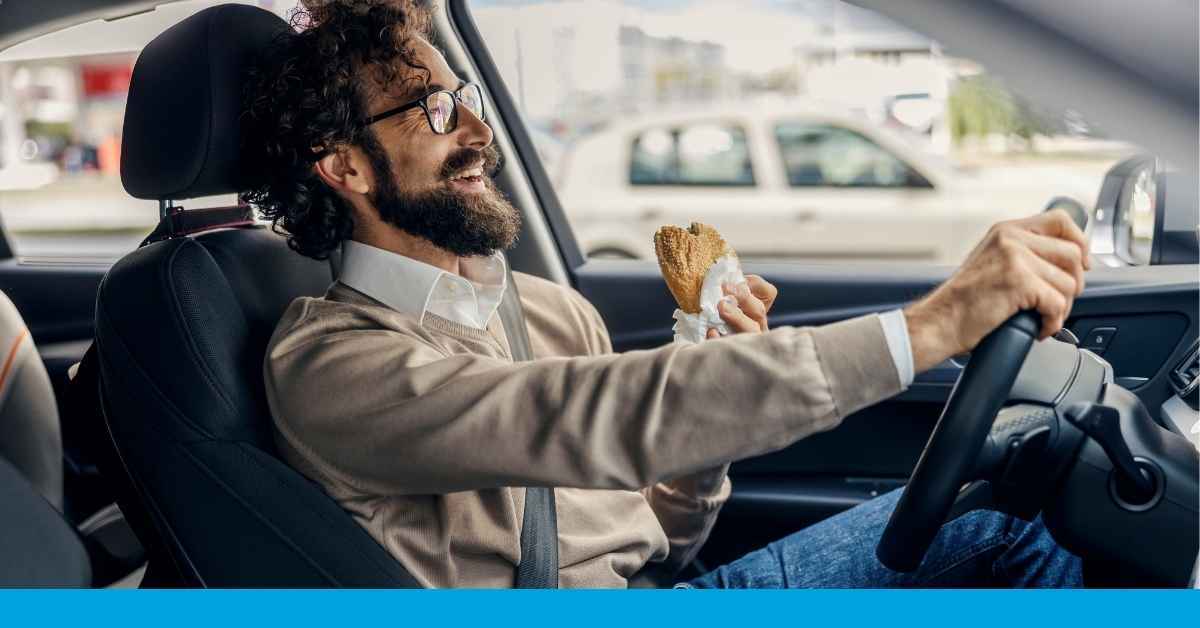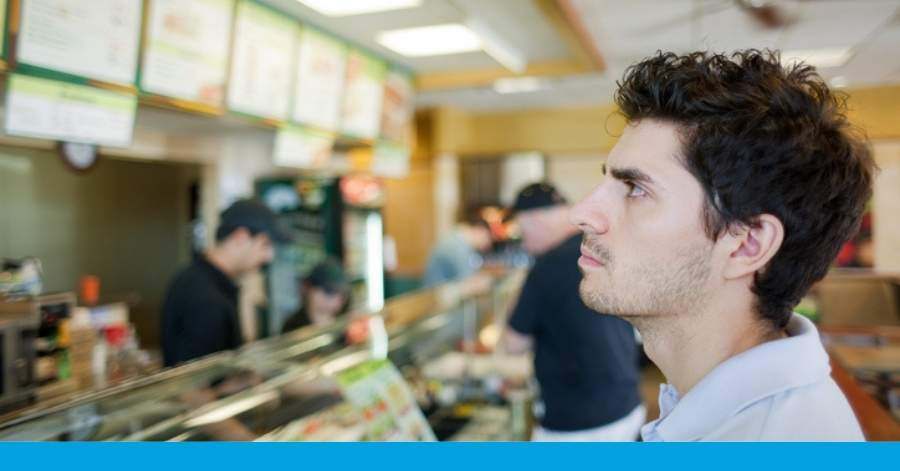Is QSR Drive-Thru Customer Behavior Changing?
After record-breaking growth during the pandemic, drive-thru traffic is softening. But this year may be more about redistribution and innovating the...
5 min read
 Sarah Beckett
May 14, 2024
Sarah Beckett
May 14, 2024
![QSR Guest Experiences: Insight Into Tech’s Impact [Latest Data]](https://www.intouchinsight.com/hubfs/website/intouch-insight/blog/qsr-guest-experiences.jpg)
When it comes to quick-serve restaurants (QSR), one thing is clear: customers crave speed, convenience, and good food.
But with an overwhelming amount of information available to help restaurant operators please guests, how to know what really works?
No doubt about it, technology is one of the key factors shaping how customers choose their go-to fast-food spots. Over 60% of customers believe that technology makes dining at restaurants more convenient. It also influences those under 45 in their decision to return to that location.
How do we know that? We surveyed 1483 customers to find out what factors are the most important to customers when choosing a QSR and how technology is influencing their decision-making process.
Curious to see the results of our Consumer Perceptions Survey? Let's dive in!
Here is what customers consider the most important factors when choosing a QSR:
When selecting a fast-food restaurant, order accuracy is the most important factor customers consider. As seen in other industry-related studies, our survey highlighted the impact of this restaurant's key performance indicator (KPI) on guest satisfaction.
But that's not all. Improving order accuracy also reduces waste of ingredients, time, and labor, ultimately increasing the restaurant’s profitability.
In addition, technologies like self-serve kiosks and mobile ordering have made it easier to ensure that orders are sent directly to the kitchen, reducing the chances of miscommunication or errors.
The quality of the drive-thru speaker is another crucial factor influencing order accuracy. Improving the clarity of the information for employees when taking orders reduces the chance of miscommunications.
Quick and efficient service not only meets the immediate needs of on-the-go guests but also provides a seamless experience.
Interestingly, the speed of service is one of the many reasons self-serve kiosks are gaining popularity. When asked whether customers prefer to order via a kiosk or a cashier, most people who choose the kiosk option say it is faster than ordering with a cashier.
According to our latest studies and reports, brands that invest in technology are making significant progress and seeing improvements in service speed.
For instance, the 2023 Drive-Thru Study revealed that investments in tools used to communicate with customers (such as speakers quality) can lead to approximately 60 seconds of faster service in the drive-thru.
Furthermore, the 2024 Emerging Experiences Report indicated that technology innovations drove speed improvements for digital orders placed for pickup.
Friendliness has always been an important factor in the guest experience in QSR. According to our survey, staff interaction is one of the top 3 factors influencing customers of all age groups to visit a fast food restaurant.
Our 2023 Drive-thru study also took into consideration the impact of employee behavior on friendliness scores. We found that even something as simple as 'please' and 'thank you' had a positive impact of 20% on the friendliness score.
It's worth noting that brands are realizing the importance of keeping their staff happy, as it directly impacts the guest experience. In the 2024 Restaurant Leadership Conference, it was highlighted that keeping the team happy is crucial, as the guest experience is only as good as the employee experience.
Although drive-thru has been a fundamental feature of QSRs for many years, technological advancements have taken it to a new level.
The introduction of double-lane drive-thrus brings significant advancements in optimizing QSR operations. By offering two lanes, restaurants can significantly increase throughput, reducing wait times during peak hours and enhancing overall customer satisfaction.
According to our survey, over 40% of respondents prefer to order from fast-food restaurants through the drive-thru, which clearly indicates that this technology-driven convenience is resonating with customers.
However, brands should consider the drive-thru design when evaluating the efficiency of this technology, particularly when two lanes merge into a single pick-up window (also known as a Y-lane drive-thru).
Even though customers may place the order through the window or use mobile apps, they will ultimately be funneled into a single lane, which could lead to delays in pickup time and frustration.
Here’s a shopper’s insight from our 2024 Emerging Experiences Report regarding mobile orders for drive-thru pickup.
“My order was likely ready on time, but because I was in line behind someone who had just placed an order at the speaker, I was unable to reach the window until six minutes past the projected time.”
When it comes to fast-food restaurants, exterior design plays a critical role in shaping guests’ experience, and it is the fourth most important factor uncovered by our survey. After all, it's the first thing they see and can set the tone for the entire visit.
We recently conducted a survey on restaurant design and infrastructure. Interestingly, nearly half of the respondents said they would bounce to a different restaurant if the parking lot was dimly lit.
This data indicates that exterior lighting is a crucial factor in customers' restaurant choices, not just for attracting but also for retaining them. Especially with the younger demographics, where concern for personal safety is becoming increasingly important.
The demand for take-out options continues to rise. And, as the survey confirmed, guests want a streamlined, easy-in easy-out experience.
In light of this demand, brands are now turning towards solutions such as pickup lockers and windows. These innovative options offer a quick and contactless experience for customers while also reducing foot traffic in the lobby and drive-thru lanes.
Our 2024 Emerging Experiences Study highlighted that customers appreciate self-service lockers for order pickup for their convenience, as they provide a sense of independence and efficiency.
Mobile ordering, contactless pick-up, and self-serve kiosks are becoming increasingly popular in many restaurants. These technological advancements have streamlined the ordering process, especially for guests who prefer a digital experience.
QSRs everywhere are implementing self-serve kiosks, and for good reason. These interactive screens provide a seamless and intuitive interface for customers to browse the menu, place orders, and complete transactions - all in a quick, contactless experience.
And that is exactly what customers value when placing orders at self-serve kiosks. Our survey shows that customers’ preferences for self-service kiosks are primarily driven by the speed and ease of customization, highlighting the power of this technology on customer satisfaction.
Our survey also revealed the impact of technology on the overall ordering experience. Respondents aged 18-44 found it easier to customize their orders digitally, whereas respondents aged 45 to 75+ preferred the help of a cashier to customize their meals.
For the younger demographics, who are typically more familiar with technology, customizing orders digitally probably offers a convenient and intuitive experience.
Conversely, respondents aged 45 and older often prioritize human assistance when customizing their meals. For them, the cashier provides a familiar touchpoint where they can articulate their preferences, resulting in a more satisfying ordering experience.
This insight shows that while the younger demographic may lead to the adoption of technological advancements, brands must recognize the preferences of their target audience to ensure great customer experiences.
Loyalty programs offer a range of rewards, from points-based systems to exclusive discounts, to keep customers coming back for more.
However, it is important for QSR brands to look closer at their loyalty program strategies. Our survey found that 46% of respondents are not members of any fast food restaurant loyalty program, and the main reason is that it takes too long to build up points to redeem for a reward.
Leading QSR chains such as McDonald’s and Wendy’s have already started revamping their loyalty programs to meet the customers’ demand for tailored programs, creating value for both customers and the business.
Digital menus, self-serve kiosks, user-friendly apps, and interactive loyalty programs are some tech advancements that simplify the ordering process and contribute to a more personalized and engaging experience.
Initiatives like mystery shopping, surveys, and CX platforms provide invaluable insights into customer perceptions and preferences for innovative solutions.
Such insights inform strategic decisions where technological advancements can enhance efficiency without compromising guest experiences.
Curious to learn how leading QSR chains leverage innovation and technology to deliver better experiences?

After record-breaking growth during the pandemic, drive-thru traffic is softening. But this year may be more about redistribution and innovating the...

Customer preferences have certainly evolved over the last decade. From technological advancements to economic shifts, many factors influence what...

Imagine this: Peter is hungry and in a hurry for something satisfying to eat. He pulls into a drive-thru, but the menu is cluttered, the line is...